
The Long Journey to Find Oneself: How Mr. Gareth Beedie Found His Craft through ZBrush
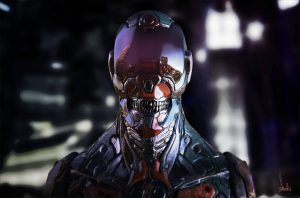 By looking at Mr. Gareth Beedie’s works, it is evident that he is serious about the craft. The details of his concepts indicate not only discipline but originality. His works are inspired but he is able to set his own brand and style to his droids; we can easily see other influences, but what Mr. Beedie does is he owns it—he brings himself to it.
By looking at Mr. Gareth Beedie’s works, it is evident that he is serious about the craft. The details of his concepts indicate not only discipline but originality. His works are inspired but he is able to set his own brand and style to his droids; we can easily see other influences, but what Mr. Beedie does is he owns it—he brings himself to it.
When asked what he would be if he weren’t working as a 3D artist, he was forward:
My focus is solely on this. It took me such a long time to find my passion in life I tried so many things and for better or worse this is what I do.
Saying that Mr. Beedie’s journey to become the artist that he is today was challenging is an understatement. He struggled to find his place under the sun. And when he finally did, he fell in love with it. It was in that moment that he knew that love doesn’t only mean doing what he wanted to do—he knew it will take work.
That’s exactly what Mr. Beedie did: he worked hard on his craft. Today, he had reached considerable levels. His talent is one of note, and he is sure of his own path
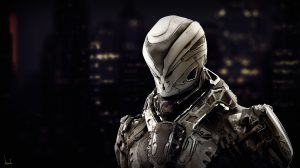 So let us get to know Mr. Beedie more through this feature from Xeno Creatives and find out that long and difficult journeys are usually the ones that pay-off in the long run.
So let us get to know Mr. Beedie more through this feature from Xeno Creatives and find out that long and difficult journeys are usually the ones that pay-off in the long run.
Xeno Creatives (XC): ZBrush definitely changed the ballgame for the 3D industry. What was it like using it for the first time? What did you have to learn to be skilled in it?
Gareth Beedie (GB): the first time I used ZBrush, I had no idea what I was getting into. I didn’t come from an art career and hadn’t even drawn in years. To be honest, I think even if I had come from a traditional 3D background, it would not have helped. Digital sculpture is its own beast entirely; you have to learn to sculpt. If you’re a sculptor in a traditional medium, then it’s just about learning the interface and the tool set. For me I had to learn it all, which is an ongoing process. Being a proficient 2D artist would have helped though.
XC: Did it help you become more efficient and better at your craft?
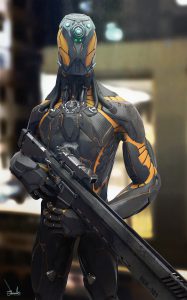 GB: I wasn’t an artist when ZBrush was first released. The first exposure I had to ZBrush was on Iteration 4R4. ZBrush was the first exposure I had to any form of 3D modelling or sculpture, so to say it changed my workflow would be a little inaccurate. It didn’t change it, it became it. The first time I even knew about ZBrush was in some online video that I came across one day. I don’t know how I found it, I just I did. At that point in my life I was aimless; I’d had lots of jobs but had never settled on any form of career. At the time I was 34, and not to sound overly dramatic, had pretty much given up on ever finding that thing in life that I had a genuine passion for. Then I saw someone sculpting in ZBrush and was mesmerized by it and knew that was what I wanted to do. I got a copy and haven’t stopped since.
GB: I wasn’t an artist when ZBrush was first released. The first exposure I had to ZBrush was on Iteration 4R4. ZBrush was the first exposure I had to any form of 3D modelling or sculpture, so to say it changed my workflow would be a little inaccurate. It didn’t change it, it became it. The first time I even knew about ZBrush was in some online video that I came across one day. I don’t know how I found it, I just I did. At that point in my life I was aimless; I’d had lots of jobs but had never settled on any form of career. At the time I was 34, and not to sound overly dramatic, had pretty much given up on ever finding that thing in life that I had a genuine passion for. Then I saw someone sculpting in ZBrush and was mesmerized by it and knew that was what I wanted to do. I got a copy and haven’t stopped since.
XC: When did you know that you’ll be using ZBrush as your main software to create 3D art? Will this be for the long run?
GB: Zbrush has been my go-to tool since day one, but the first thing I learned was that, to create the imagery I wanted to create, I needed to know more than just one tool. I don’t really think that there is anyone who works in the realm of digital art who relies on one package to achieve everything. Maybe some of the 2D guys but for 3D even if you don’t generalise you need to know the whole pipeline. If you want to create realistic portraiture, for example, then you need to sculpt, retop, texture, set up shaders lighting, render in a capable render engine and comp, that’s allot of stuff you need to know besides zbrush. Because I have a tendency to lean more toward hard surface, I am learning and using more traditional modelling tools as well, but I don’t think I will ever leave Zbrush—it’s too powerful a tool especially for organic stuff.
XC: What were the other media that you used before ZBrush? Did these ultimately help you in making your creations better while using the software?
GB: I didn’t use anything before ZBrush. ZBrush is where it all began.
XC: How is the knowledge in human anatomy important when working with ZBrush?
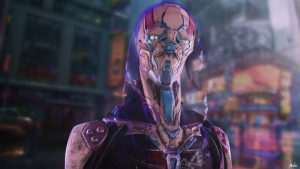 GB: Well, that really depends on what you’re making, if you’re making a tank…. not so much. But if you’re hoping to create creatures or characters, then Anatomy in general is everything. While a strong silhouette will get you a good way of the way to your goal anatomy is where you ground your design. By creating designs that are reinforced through the proper study of anatomy you gain so much knowledge but not just of musculature and skeletal anatomy, but gesture, proportion and emotion. By incorporating all of these elements into your design, you ground it in reality which helps to sell that what you are designing is real and it is believable.
GB: Well, that really depends on what you’re making, if you’re making a tank…. not so much. But if you’re hoping to create creatures or characters, then Anatomy in general is everything. While a strong silhouette will get you a good way of the way to your goal anatomy is where you ground your design. By creating designs that are reinforced through the proper study of anatomy you gain so much knowledge but not just of musculature and skeletal anatomy, but gesture, proportion and emotion. By incorporating all of these elements into your design, you ground it in reality which helps to sell that what you are designing is real and it is believable.
XC: Do you see yourself being involved in the movie and television industry?
GB: Most of my professional work so far has been designing things for shorts and independent projects. Everybody dreams of being involved in big projects with famous studios, and I’m no different. But I’m also a realist, I’ve only been an artist for three and a half years and I’m still very much a beginner struggling to find my first big break. So for me right now consistency and development are where I live.
XC: Was delving into the craft really a passion to begin with, a hobby, or a mere job for you?
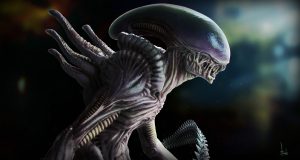 GB: I don’t think being an artist can ever be a mere job, not if you really want to find success. For me it has to be about passion and obsession. Even if you’re only looking to become good at a single aspect, art requires so much commitment that you have to have passion and focus. For me it was about changing my life and finding passion.
GB: I don’t think being an artist can ever be a mere job, not if you really want to find success. For me it has to be about passion and obsession. Even if you’re only looking to become good at a single aspect, art requires so much commitment that you have to have passion and focus. For me it was about changing my life and finding passion.
XC: Your works over at ArtStation are such MARVELS to BEHOLD. The details in them are just plain amazing. And the concepts are OUTLANDISHLY-ORIGINAL. We can’t keep ourselves from staring at them. But do you have any favorite pieces? What are they and why?
GB: I don’t think I have favourites as such; it’s more like pieces that I don’t dislike as much as others. I generally always feel disappointed with what I produce because I know that if I knew more I could do better, especially when looking at things in retrospect. I think VDR and Master Fett are pieces I don’t hate just because I love “Star Wars” so much. Those two were really fun to do just because they are already such iconic designs, to try and do something different that still feels like the character is pretty challenging. Aside from that I think Gumshoe, Under Construction and Unysis Bio systems 101 are pretty good examples of my style, though of the three Unisys is the only final image I actually like at the moment.
XC: What are the other concepts that you would want to create?
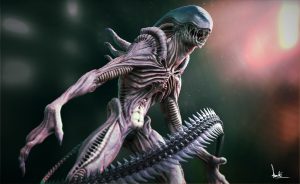 GB: I think Vehicles, ships and weapons platforms are the next big push I’ll make. Apart from those, I take a pretty holistic approach to my development as an artist so I’m always doing whatever takes my fancy really. Environments are something I would love to be better at though. However, like most people, pushing out of your comfort zone can be difficult, but ultimately rewarding.
GB: I think Vehicles, ships and weapons platforms are the next big push I’ll make. Apart from those, I take a pretty holistic approach to my development as an artist so I’m always doing whatever takes my fancy really. Environments are something I would love to be better at though. However, like most people, pushing out of your comfort zone can be difficult, but ultimately rewarding.
XC: Whom do you consider your influences? Why do you look up to them?
GB: Honestly, there are too many to mention in too many different aspects of the industry. I think what really inspires me, is excellence. We all work as part of the same community and it’s not that big. As such, mostly anybody reading this will already know who my influences are, as they are their influences to. It’s all the people that are at the top of the pile that pump out consistently unbelievable work. One special mention though has to be Col Mitchel Price. Col has had a huge influence on my development and was one of the first people to notice my work. He has been an invaluable source of inspiration and encouragement; he’s an outstanding artist.
XC: Your works will look awesome in a video game. Do you also see yourself in Game Character Design?
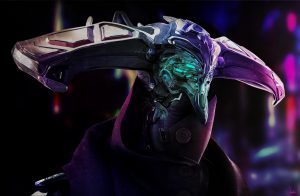 GB: Creating Real time characters for game engines is what I have been focusing on lately. I’d love to work in a character art role somewhere, but I don’t think I’d stop doing hard surface, just because it’s the thing that I’ve found I lean more heavily toward.
GB: Creating Real time characters for game engines is what I have been focusing on lately. I’d love to work in a character art role somewhere, but I don’t think I’d stop doing hard surface, just because it’s the thing that I’ve found I lean more heavily toward.
XC: If you weren’t a 3D artist today, what do you think you’d be specializing in?
GB: I don’t know and I don’t really think like that. My focus is solely on this. It took me such a long time to find my passion in life I tried so many things and for better or worse this is what I do. Will I find major success doing it? I don’t know. All I can do is keep working, pushing and hoping for the best.
XC: What advice or message can you give young aspirants wanting to enter the craft/industry?
GB: I’m not really the guy to ask to be honest. I, by no means, have got anything worked out. All I can say really is work hard; make your weaknesses your strengths and don’t give up. These are things that I believe in. Just don’t give up.
You have truly inspired us Mr. Gareth Beedie. We are one with you in your further journey into your craft.
Want to see more of Mr. Gareth Beedie’s works? Click here!


2 comments on “The Long Journey to Find Oneself: How Mr. Gareth Beedie Found His Craft through ZBrush”
This is a comment to the The Long Journey to Find Oneself: How Mr. Gareth Beedie Found His Craft through ZBrush – Xeno Creatives webmaster. Your website is missing out on at least 300 visitors per day. Our traffic system will dramatically increase your traffic to your site: http://stpicks.com/2rusd – We offer 500 free targeted visitors during our free trial period and we offer up to 30,000 targeted visitors per month. Hope this helps 🙂 Unsubscribe here: http://xahl.de/q
This is good advice! Thank you very much!